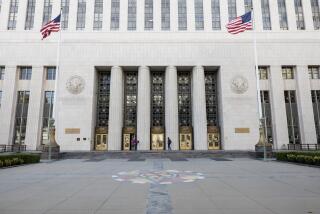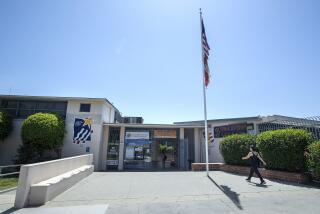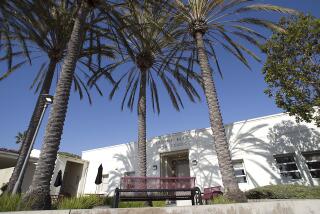The Case of the Internet Mole : Livermore finds itself the repository of a most unwanted photo collection
More than five years ago, a hacker broke into computers several times at the Lawrence Livermore National Laboratory. Apparently the nuclear weapons lab is still vulnerable to outlaws riding the information superhighway, although this time the suspicion is that an insider opened the gates to half a dozen or so friends.
Red-faced officials confirm that lab computers were being used to store and distribute pornographic images--2,000 steamy megabytes. They did not realize it until a Times reporter alerted them.
The disclosure could not have come at a more awkward time for the Livermore, Calif., lab, which is fighting for its life in the post-Cold War era. Its budget has shrunk since the demise of Ronald Reagan’s fanciful Star Wars project, on which billions were wasted, and the collapse of the Soviet Union. Nuclear bomb designers are a glut on the market. Livermore is promoting itself as the ideal site for a proposed $1-billion research superlaser known as the National Ignition Facility.
We have supported Livermore’s bid to survive because its staff represents a special national resource. But the smut disclosure hardly helps our case. Officials insist that the breached computer contained only unclassified information and that those used for classified work are protected by an “air gap,” that is, physically separated from non-classified computers and the Internet telephone lines through which the cyberpunk pirates maraud.
Livermore is certainly not their only victim. Last April, a student at the Massachusetts Institute of Technology was arrested on charges of distributing more than $1 million worth of pirated software through the Internet. And authorities have started a manhunt for Kevin Mitnick, a Southern Californian whom some call a veritable one-man keyboard crime wave, allegedly stealing valuable software from cellular phone companies, breaking into Department of Motor Vehicles records, even harassing the FBI agents investigating him.
Designers of the new Information Age were inspired by noble dreams of free-flowing data as a global liberating force, a true democratizing agent. Sadly, the crooks and creeps have also climbed aboard. The time has come for much tighter computer security. After all, banks learned some time ago that they had to put locks on their vaults.
More to Read
Inside the business of entertainment
The Wide Shot brings you news, analysis and insights on everything from streaming wars to production — and what it all means for the future.
You may occasionally receive promotional content from the Los Angeles Times.










